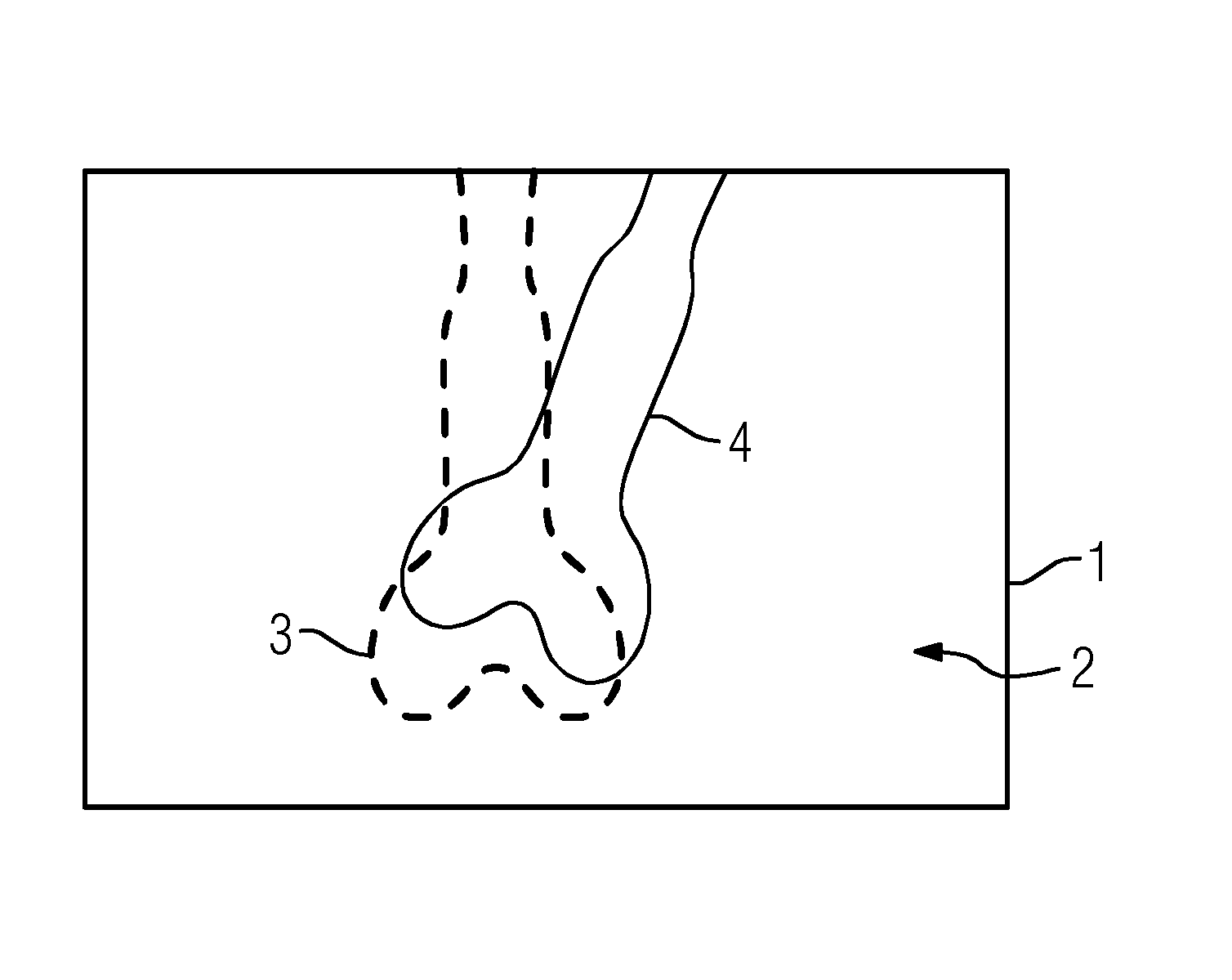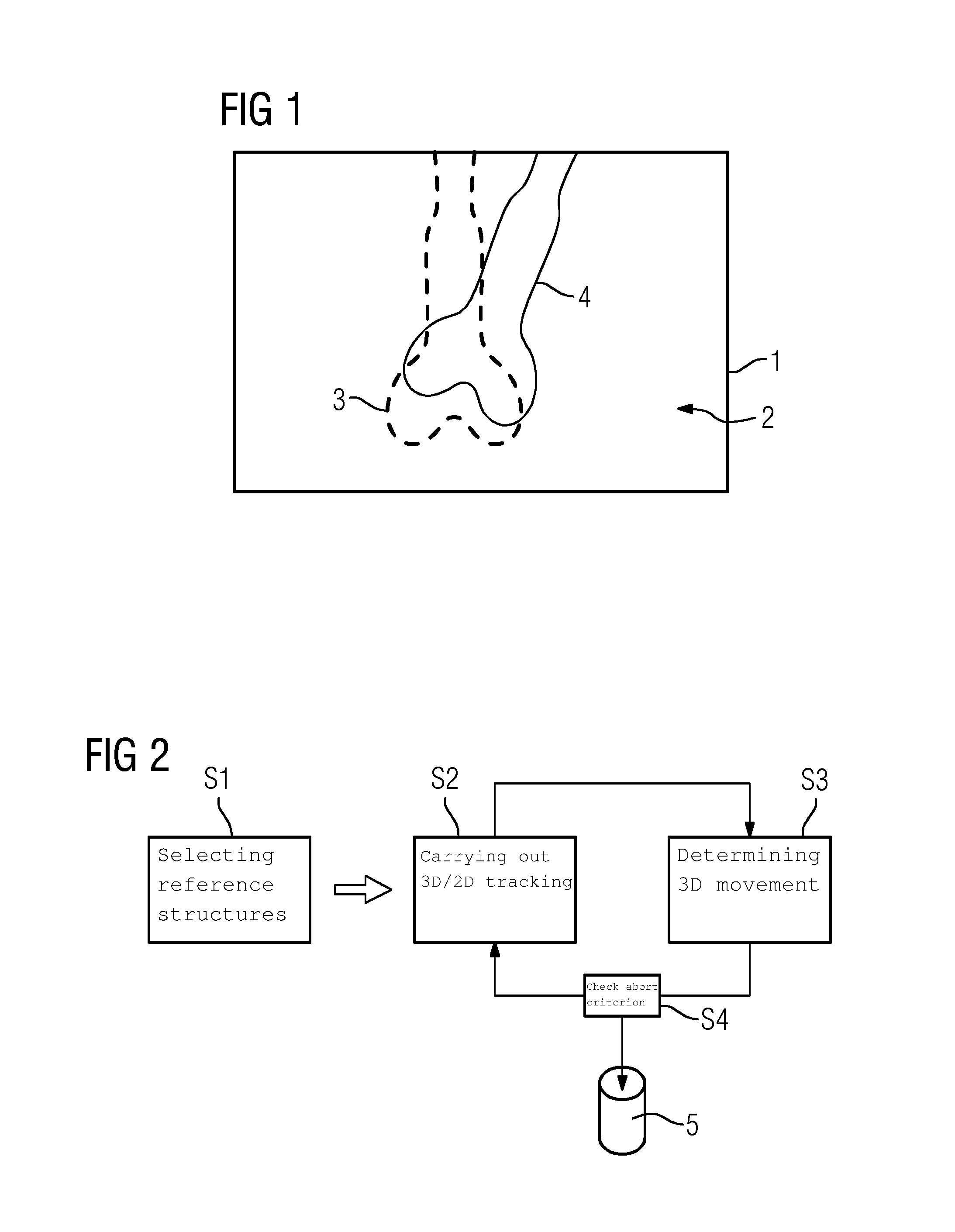Method for 2D/3D Registration, Computational Apparatus, and Computer Program
a technology of computational apparatus and computer program, applied in image enhancement, tomography, instruments, etc., can solve problems such as inability to accurately superimpose, inability to accurately predict movement, and interruption of the person carrying out the procedur
- Summary
- Abstract
- Description
- Claims
- Application Information
AI Technical Summary
Benefits of technology
Problems solved by technology
Method used
Image
Examples
Embodiment Construction
[0062]FIG. 1 depicts, in an exemplary manner and in principle, a superposition image 1 made of a three-dimensional image data record and an x-ray image, wherein the x-ray image 2 forms the basis on which information 3 from the three-dimensional image data record is superposed. An anatomical structure 4, in this case a bone, is identifiable in the x-ray image 2 in a shadow-like manner and with a low resolution. The information 3 relating to the same anatomical structure 4 was superposed from the three-dimensional image data record, wherein the superposition was brought about using an approximate initial transformation, and consequently an approximate 2D / 3D registration. The anatomical structure in accordance with the information 3 is slightly twisted and translated in relation to the visible anatomical structure 4 of the x-ray image 2. The exemplary embodiment of the method described below is now directed to establishing a registration transformation that leads to an accurate superpo...
PUM
 Login to View More
Login to View More Abstract
Description
Claims
Application Information
 Login to View More
Login to View More - R&D
- Intellectual Property
- Life Sciences
- Materials
- Tech Scout
- Unparalleled Data Quality
- Higher Quality Content
- 60% Fewer Hallucinations
Browse by: Latest US Patents, China's latest patents, Technical Efficacy Thesaurus, Application Domain, Technology Topic, Popular Technical Reports.
© 2025 PatSnap. All rights reserved.Legal|Privacy policy|Modern Slavery Act Transparency Statement|Sitemap|About US| Contact US: help@patsnap.com



